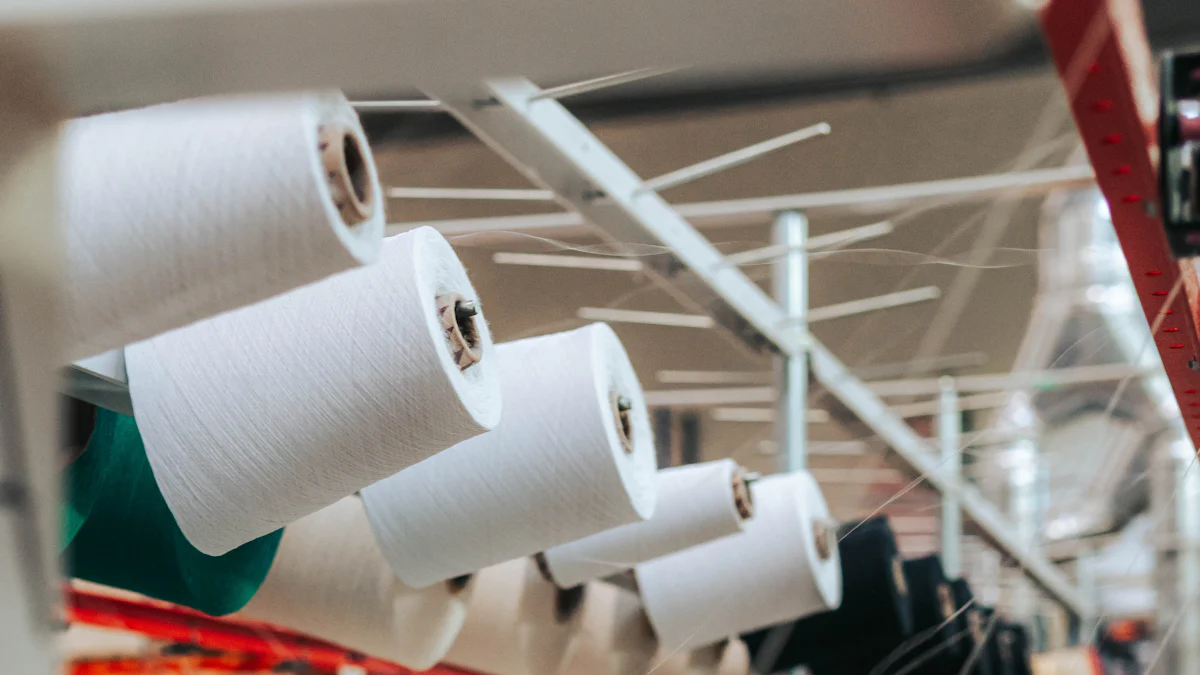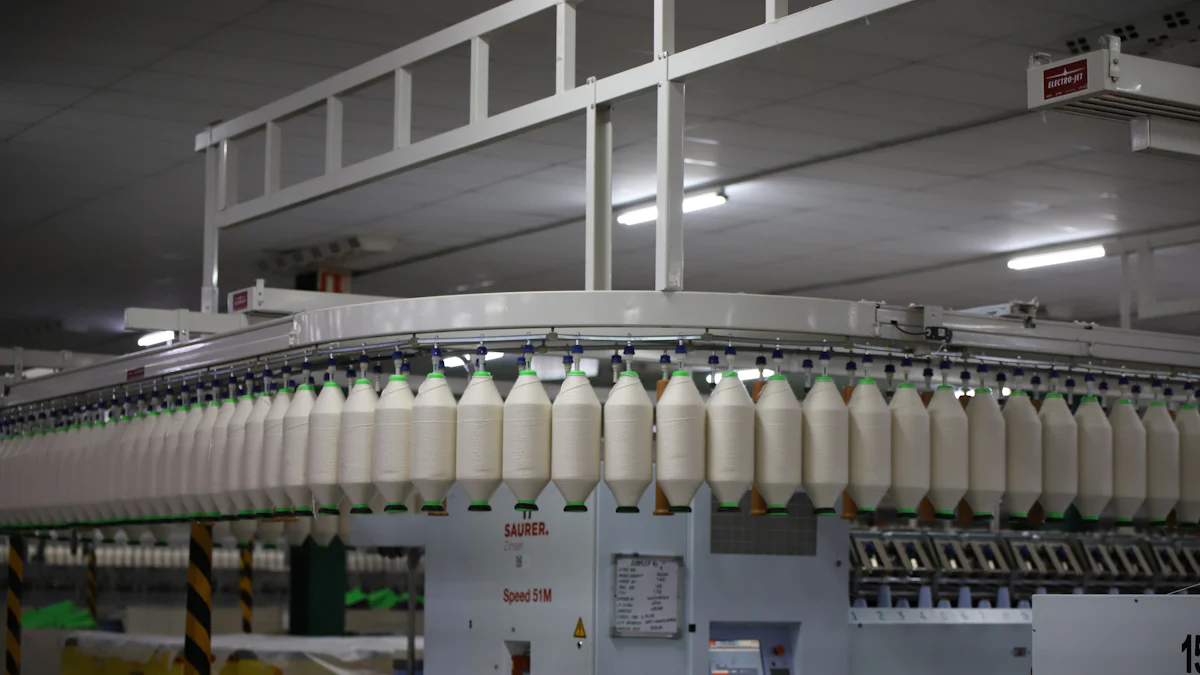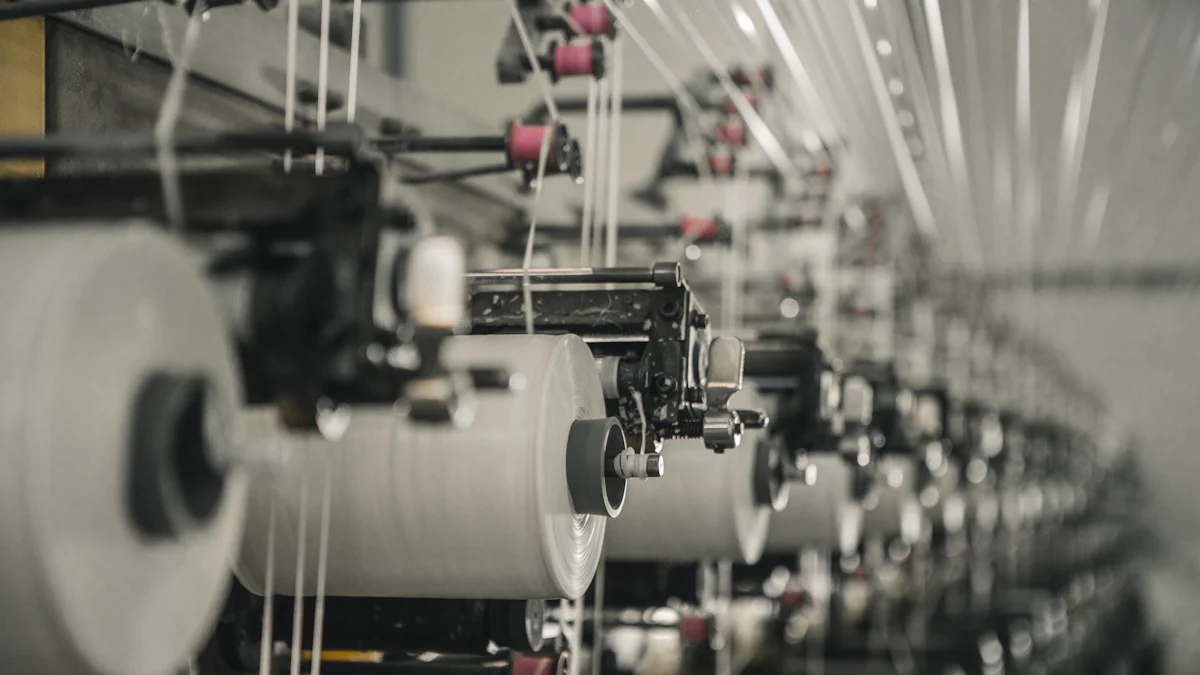
News

Variable frequency drives (VFDs Advance) can significantly enhance textile production. VFDs Advance adjust motor speed to optimize spinning and weaving processes. This innovation helps machines operate more efficiently while consuming less energy. For instance, VFDs Advance on spinning machines reduce energy consumption by 30%. With precise control, VFDs Advance maintain consistent quality, save power, and boost overall efficiency.
Key Takeaways
VFDs use less energy by changing motor speeds, saving up to 30% power in spinning machines.
With VFDs, thread breaks happen less, and quick changes meet new needs easily.
VFDs cut repair and energy costs, making textile work cheaper and better for the environment.
Applications of VFDs in Textile Manufacturing

Spinning: Better Yarn and Energy Savings
VFDs help control motor speed in spinning machines. They adjust speeds to keep yarn quality steady and reduce flaws. This control lowers thread breaks, making production smoother. VFDs also cut energy use, saving up to 30% power. This reduces costs and boosts efficiency. These features make VFDs key for better and greener textile production.
Weaving: Better Fabric with Speed Control
Weaving improves with VFDs managing loom speeds and patterns. This ensures fabric is consistent and has fewer flaws. Thread breaks happen less, so work runs smoothly. VFDs let you quickly change settings to meet new needs. Controlling motor speed improves efficiency and fabric quality.
Dyeing: Steady Flow and Heat for Even Colors
In dyeing, VFDs control pump and agitator speeds. This keeps dye spread even across fabrics. They also manage liquid flow and heat, keeping temperatures steady. This stops problems like uneven colors or burns. VFDs save energy, making dyeing cheaper and eco-friendly.
Finishing and Printing: Precise Control for Top Results
Finishing and printing need exact control for great results. VFDs adjust speeds to apply dyes and prints evenly. They keep tension steady, improving product quality. VFDs sync motors for better control and faster work. They also manage heat and flow for the best conditions. These features save energy and cut costs while improving quality.
Measurable Benefits of VFDs in Textile Production
Energy Efficiency: Saving Power and Cutting Costs
VFDs save energy by controlling motor speeds better. For example, spinning machines with VFDs use 30% less power. This saves money and makes work more efficient. By wasting less energy, VFDs help protect the environment. You can work smarter and meet green goals.
Increased Output: Making Production Faster and Smoother
VFDs improve production by controlling motors precisely. Changing motor speeds makes machines run smoothly and last longer. In spinning, VFDs keep yarn quality steady, reducing mistakes. This can boost production by 10%. VFDs also let you adjust quickly to new needs, improving results.
Cost Savings: Spending Less on Repairs and Work
VFDs lower stress on machines by controlling motor speeds. This means fewer breakdowns and cheaper repairs. For example, a factory using VFDs saved money fast by cutting energy and repair costs. You can make each product cheaper, helping your business succeed.
Sustainability: Helping the Planet and Saving Money
VFDs help make factories greener by using less energy. They cut carbon emissions and follow eco-friendly rules. By controlling speed and power, VFDs waste less energy. Using them shows you care about the planet. You save money while helping the Earth stay clean.
Real-World Examples of VFDs in Textile Production

Case Study: Saving Energy in Spinning Machines
Using VFDs in spinning machines saves a lot of energy. A factory added VFDs and cut energy use by 30%. This shows how VFDs save power and lower costs. They control motor speed to keep yarn quality steady. These features make VFDs great for energy-heavy tasks like spinning.
Case Study: Better Weaving with VFDs
Weaving gets better with VFDs controlling motor speeds. They help machines run smoothly and make more fabric. Fewer thread breaks mean less waste and better results. You can also switch to new designs faster. VFDs improve production and keep fabric quality high.
Case Study: Lower Costs in Dyeing and Finishing
Dyeing and finishing cost less with VFDs. For example:
Lekos Dye saved $10,000 monthly on electricity with VFDs.
Rebates made VFDs cheaper to install, paying off faster.
Extra VFDs cut emissions and saved more energy.
These examples show VFDs save money and help the environment. Adding VFDs to dyeing and finishing improves results and lowers costs.
Variable frequency drives (VFDs) are changing textile production. They help control motor speed for better efficiency and energy savings. VFDs improve accuracy, reduce machine wear, and allow flexible production. Using VFDs keeps quality steady, cuts costs, and helps businesses stay competitive.
FAQ
What are VFDs, and how do they help in textiles?
VFDs change motor speeds to fit the job's needs. This saves energy, works better, and makes textiles higher quality.
Can VFDs lower waste in textile production?
Yes, VFDs control motor speeds carefully. This reduces mistakes, keeps work steady, and cuts waste in spinning, weaving, and dyeing.
Can all textile machines use VFDs?
Most textile machines can use VFDs, like spinning and weaving ones. They improve efficiency and keep motor speeds steady for better results.
Please give us a message